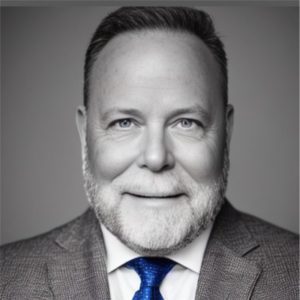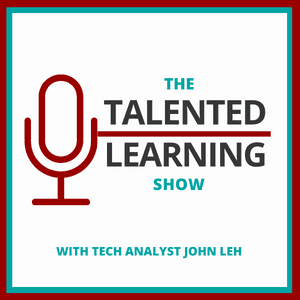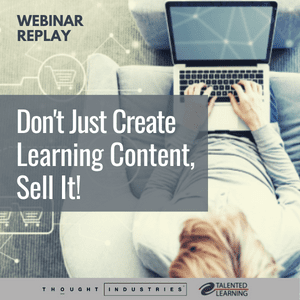
Podcast: Play in new window | Download
Subscribe: Apple Podcasts | Spotify | Amazon Music | Android | iHeartRadio | Blubrry | Email | RSS
EPISODE 65: Cohort-Based Online Courses
We’ve all known from our earliest school days that cohort-based education can be a powerful way to learn. But in the business world, face-to-face classroom instruction isn’t always practical. So instead, what if you blend the benefits of online learning with tools that help cohort members engage asynchronously?
That’s exactly what today’s guest is here to discuss. Late last year, Keith Meyerson, took on a new role as Director of Talent Management at adventure lifestyle company, POWDR. Since then, he’s been kickstarting the company’s leadership development program. And that, itself, has been an adventure.
What has Keith discovered that can help the rest of us? Find out as we explore his mission to drive learning through asynchronous cohort-based online courses at POWDR.
COHORT-BASED ONLINE COURSES – KEY TAKEAWAYS
- Most of us have enjoyed the camaraderie of classroom training, whether in-person or online. We’re also familiar with the convenience of self-paced online learning. And now, it’s possible to combine the strengths of both through asynchronous cohort-based online courses.
- When looking for technology to support peer-to-peer asynchronous learning, don’t assume you need to find one platform that does it all. By integrating multiple tools, you may be able to quickly build a customized solution.
- Measuring the impact of cohort-based online learning doesn’t need to be overly complicated. Start by clearly defining the behaviors you want to change. Then establish metrics and a process to track progress over time. Focus on continuous improvement.
COHORT-BASED ONLINE COURSES – Q&A HIGHLIGHTS
Keith, welcome. First, could you tell everyone a little about POWDR? Then we’ll dig further…
Thanks, John. Well, POWDR is an adventure lifestyle company. We own and operate multiple brands, primarily ski resorts. And we also own Woodward, which started as camps in Pennsylvania. But we’ve expanded beyond skiing and snowboarding properties to skateboarding, BMX and more. So now, we offer year-round activities.
Last year, POWDR hired you as its first Director of Talent Management. What did you find when you arrived?
We’re what most people consider a holding company, with various business units. That includes Woodward, as well as popular ski resorts like Killington, Snowbird and Copper Mountain.
Before I started, talent management was handled locally without any centralized support. So I was brought in to help the organization operate more efficiently and provide value-added services to our teams in the field. And on Day One in Utah, the CEO took me for a walk to explain that his first priority was leadership development.
There was no common language between disparate business units, so we needed to establish consistency in leadership development, along with other talent management functions such as performance management, succession planning, career pathing, onboarding — everything in that realm.
But to ensure that our managers are capable of supporting all these talent management initiatives, we agreed it was important to start with leadership development.
Find out how other companies are achieving more with learning systems that create business value. Get inspiration from dozens of success stories in our free LMS Case Study Directory…
Smart move. So your managers face unique challenges in their day jobs that make it difficult to attend in-person leadership development, right?
Well, everyone agreed that there was a need. But the realities of our industry make it difficult. How do we reach people who are on ski patrol rather than sitting behind a desk? And during seasons when we’re focusing on providing the best experiences for our guests, how can people carve out time for learning activities?
I quickly heard loud and clear from decision-makers at our properties that if I tried to pull people off a mountain and put them in a classroom for a static learning event, I might receive some pushback. Needless to say, that wouldn’t be warmly received.
No doubt! So you solved this challenge through asynchronous cohort-based online courses. What exactly does that look like?
Years ago, I was an early adopter of a social learning platform. Think of Facebook, LinkedIn, and Twitter all at once, so you could create online learning communities. But they were separate from actual learning paths and didn’t allow live peer-to-peer feedback you experience in a classroom. We didn’t want to lose that.
So, imagine we’re facilitating a feedback skills workshop based on the DDI STAR method. The instructor might explain this model, and then we might break participants into triads including a manager, an employee and an observer. Next, they could practice using the model to get feedback. The observer could take notes and provide feedback to the manager.
That kind of interaction would be lost if we moved to standard online learning delivery. So I began researching technology to replicate that classroom peer-to-peer experience through online video. And I found Brainier LMS, which has a tight integration with Bongo — a video practice and feedback platform that supports different types of assessments and peer-to-peer interactions.
I see.
This lets us assign an activity, like the one in our pilot module on trust. Everyone gets involved by interviewing their team about trust on six different dimensions. Then when it’s convenient, they return to the LMS, where they answer two questions on video:
- What surprises did you learn when you interviewed your team?
- What are you going to do about it?
These video answers are shared with the cohort, and members are instructed to respond.
Someone might say, “I understand you’re now going to do X based on the information you discovered. Great. Maybe our team will try that.” Or, “Our team has also done Y. Perhaps you’d want to incorporate this, as well.”
Mmhmm…
So now, rather than this just being a compliance exercise where people learn prescribed content, they’re getting involved in an activity and they’re collaborating through social interactions. This gives them an opportunity to learn from their peers, but it’s asynchronous.
In other words, someone could record a video and upload it on a Monday. And anytime over the next two weeks, they could get feedback from other people. That’s where the asynchronous cohort concept comes into play.
Want a better way to manage the business of learning? Find vendor profiles, reviews, case studies and more in our free Learning Systems Directory…
Nice. Tell us more about the program itself. How did you find content that fits your objectives for cohort-based online courses?
So we designate two weeks for the knowledge portion, using content from OpenSesame. After looking at many options, I chose OpenSesame because it gives us access to many providers with true scenario-based learning. It’s experiential, where an adult learner can pick their own adventure from various pathways, so the logic flow isn’t dictated to them. I think that’s more engaging and impactful.
Makes sense…
And why two weeks for the knowledge segment? Again, it’s about the realities of running a business where we don’t want people feeling forced to comply with an arbitrary target date. So they have two weeks to complete each of the first three steps: knowledge, activity-based practice and collaborative feedback. And then they have a month for the performance piece, where they apply what they’ve learned.
Excellent.
I look at learning as the transfer of knowledge into performance ability. It’s not just a singular learning event. So we want to be sure learners have enough time and enough low-risk activities so they can take in new knowledge and then practice, socialize and implement.
Also, we do recap calls. There are six, but participants only need to attend one. That is the only static event, where we’ll have a facilitated conversation to improve the program as we go forward. And so we’ll discuss questions like these:
- What worked?
- What didn’t work?
- What can we do better to make the next module even more impactful?
- How can we help you embed this into your day-to-day work life?
Cool. Very innovative. So, what behaviors are you trying to change? And how are you measuring that?
…For complete answers to this question and more about cohort-based online courses, LISTEN TO THE FULL 30-MINUTE PODCAST!
Learn More About Brainier LMS
Check out the Brainier profile in our Learning Systems Directory.
Need Help Finding the Best LMS for Your Organization?
Fill out the form below to request a complimentary consultation call with John Leh:






